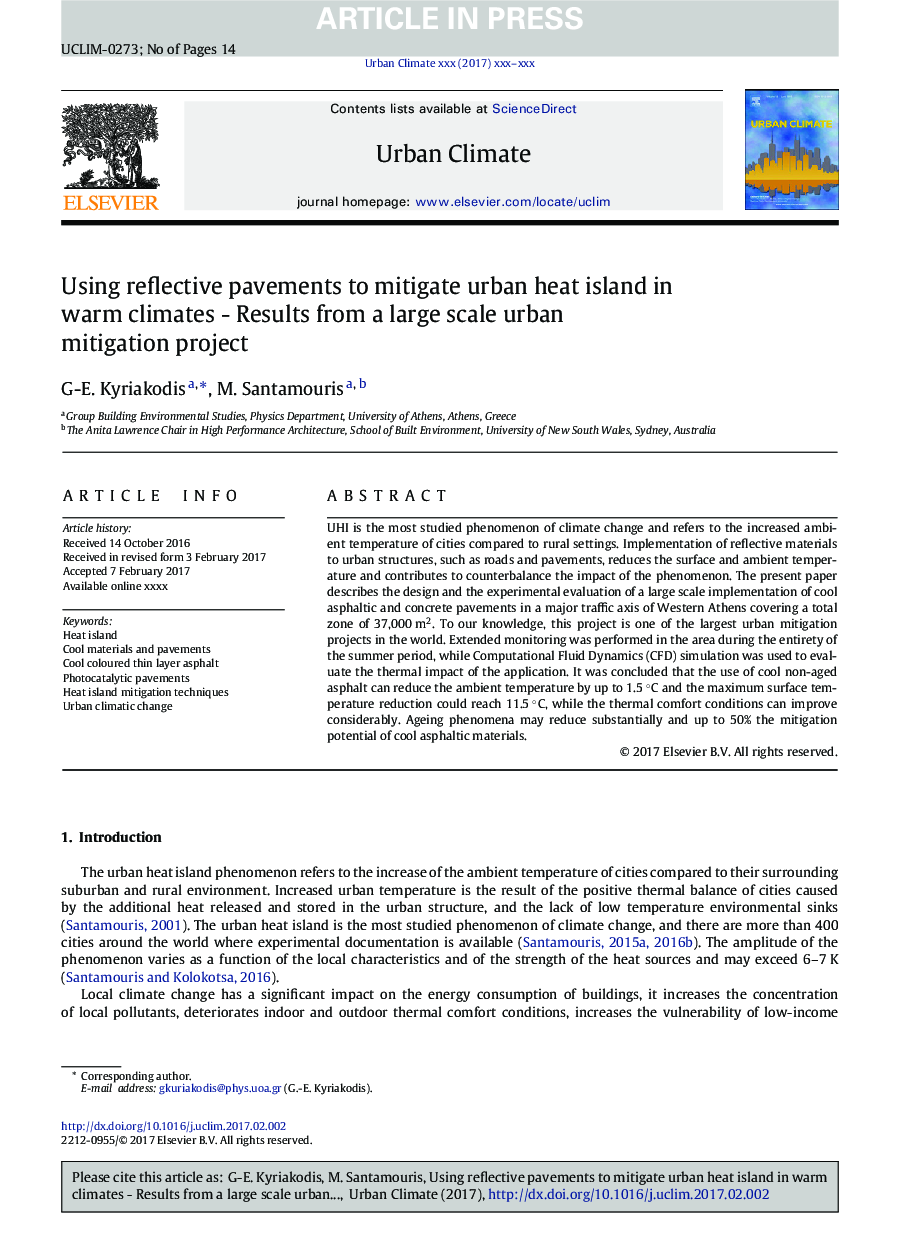| Article ID | Journal | Published Year | Pages | File Type |
|---|---|---|---|---|
| 6576874 | Urban Climate | 2018 | 14 Pages |
Abstract
UHI is the most studied phenomenon of climate change and refers to the increased ambient temperature of cities compared to rural settings. Implementation of reflective materials to urban structures, such as roads and pavements, reduces the surface and ambient temperature and contributes to counterbalance the impact of the phenomenon. The present paper describes the design and the experimental evaluation of a large scale implementation of cool asphaltic and concrete pavements in a major traffic axis of Western Athens covering a total zone of 37,000 m2. To our knowledge, this project is one of the largest urban mitigation projects in the world. Extended monitoring was performed in the area during the entirety of the summer period, while Computational Fluid Dynamics (CFD) simulation was used to evaluate the thermal impact of the application. It was concluded that the use of cool non-aged asphalt can reduce the ambient temperature by up to 1.5 °C and the maximum surface temperature reduction could reach 11.5 °C, while the thermal comfort conditions can improve considerably. Ageing phenomena may reduce substantially and up to 50% the mitigation potential of cool asphaltic materials.
Keywords
Related Topics
Physical Sciences and Engineering
Earth and Planetary Sciences
Earth and Planetary Sciences (General)
Authors
G-E. Kyriakodis, M. Santamouris,
